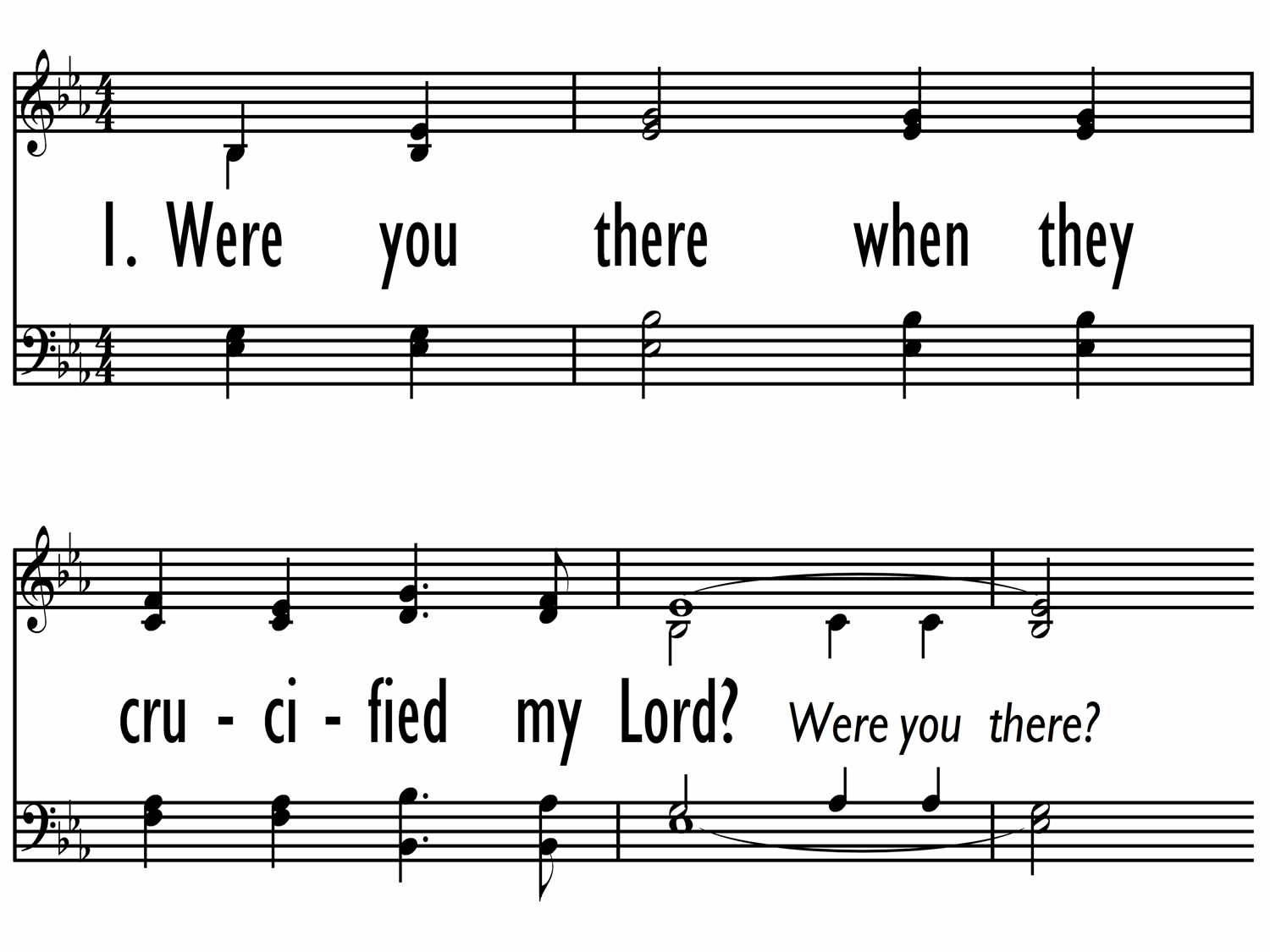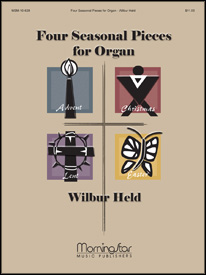- |
User Links
Were You There
Hymn Information
- First Line
- Were you there when they crucified my Lord?
- Text Source
- African American spiritual
- Tune Name
- WERE YOU THERE
- Harmonizer
- C. Winfred Douglas (1940)
- Tune Source
- African American spiritual
- Topic
- Church Year: Good Friday · Jesus Christ: Confidence in · Jesus Christ: Death
Copyright Information
- Text Copyright
- Public Domain
- Tune Copyright
- Public Domain
- Reprint/Projection Information
- Words and Music: The Words and Music are in the Public Domain; you do not need permission to project or reprint the Words and Music.
Full Text
Scripture References
Thematically related:
- st. 2 =
- st. 3 =
- st. 4 =
Confessions and Statements of Faith References
Further Reflections on Confessions and Statements of Faith References
This song reflects the narrative of the suffering and death of Christ on Calvary, events whose significance and purpose is deepened by the confessions of the church. Heidelberg Catechism, Lord’s Days 15-16, Questions and Answers 37-44 explain the significance of each step of his suffering. Question and Answer 40 testifies that Christ had to suffer death “because God’s justice and truth require it; nothing else could pay for our sins except the death of the son of God.”
The Belgic Confession, Article 20 professes that “God made known his justice toward his Son…poured out his goodness and mercy on us…giving to us his Son to die, by a most perfect love, and raising him to life for our justification, in order that by him we might have immortality and eternal life.”
Consider also the testimony of Belgic Confession, Article 21: “He endured all this for the forgiveness of our sins.”
Were You There
Call to Worship
Additional Prayers
Were You There
Tune Information
- Name
- WERE YOU THERE
- Key
- E♭ Major
- Meter
- 10.10.14.10


 My Starred Hymns
My Starred Hymns






